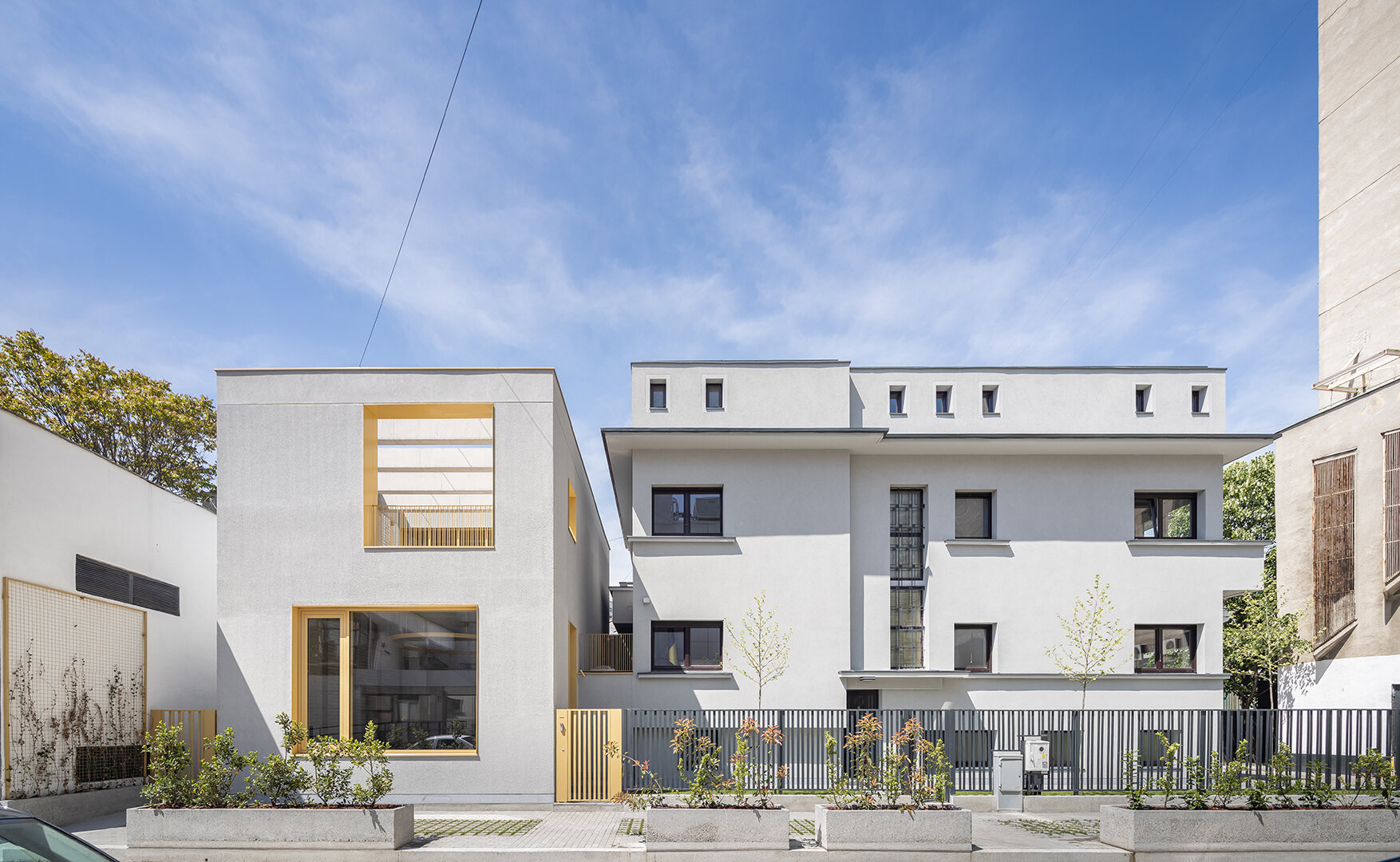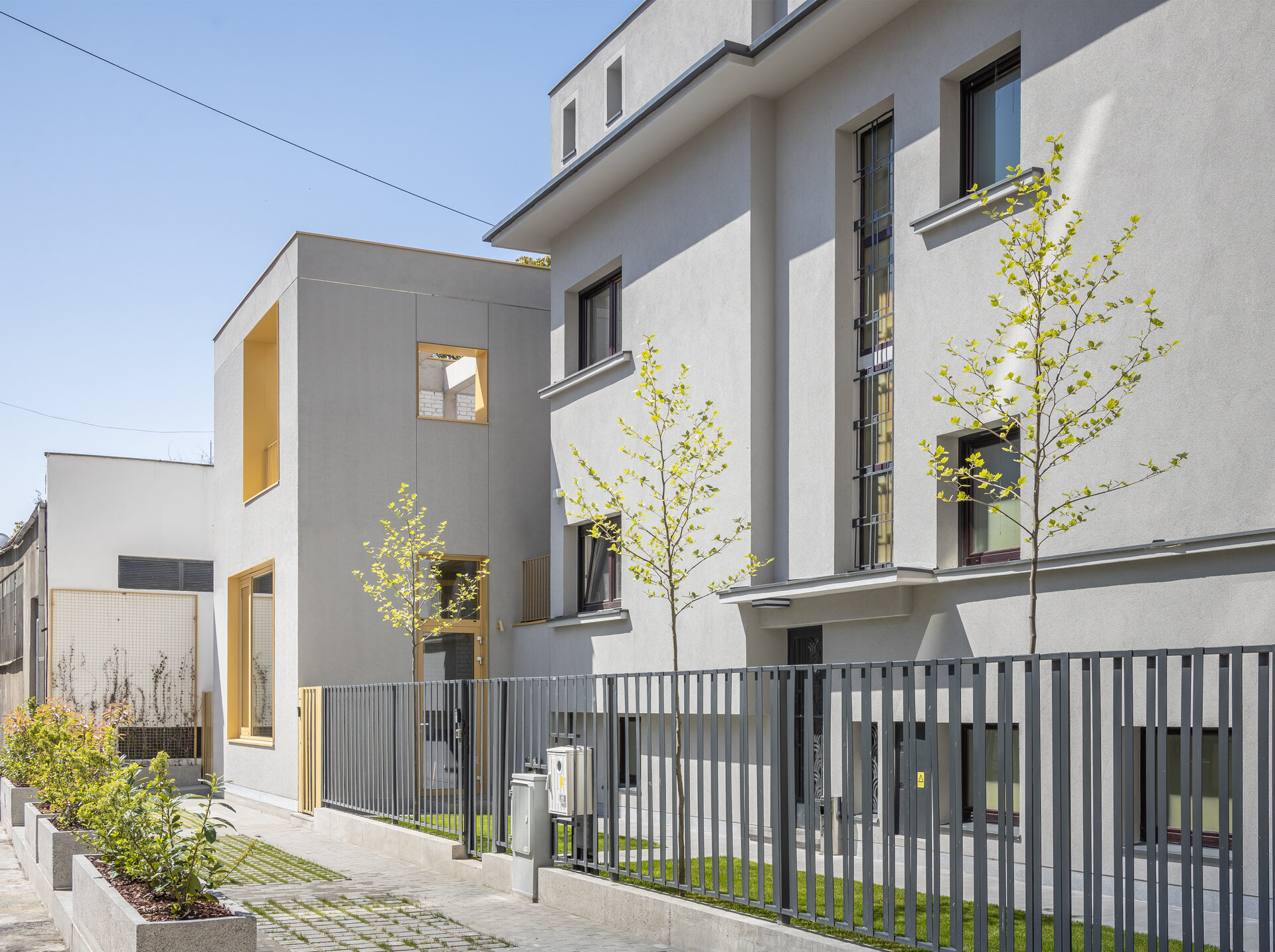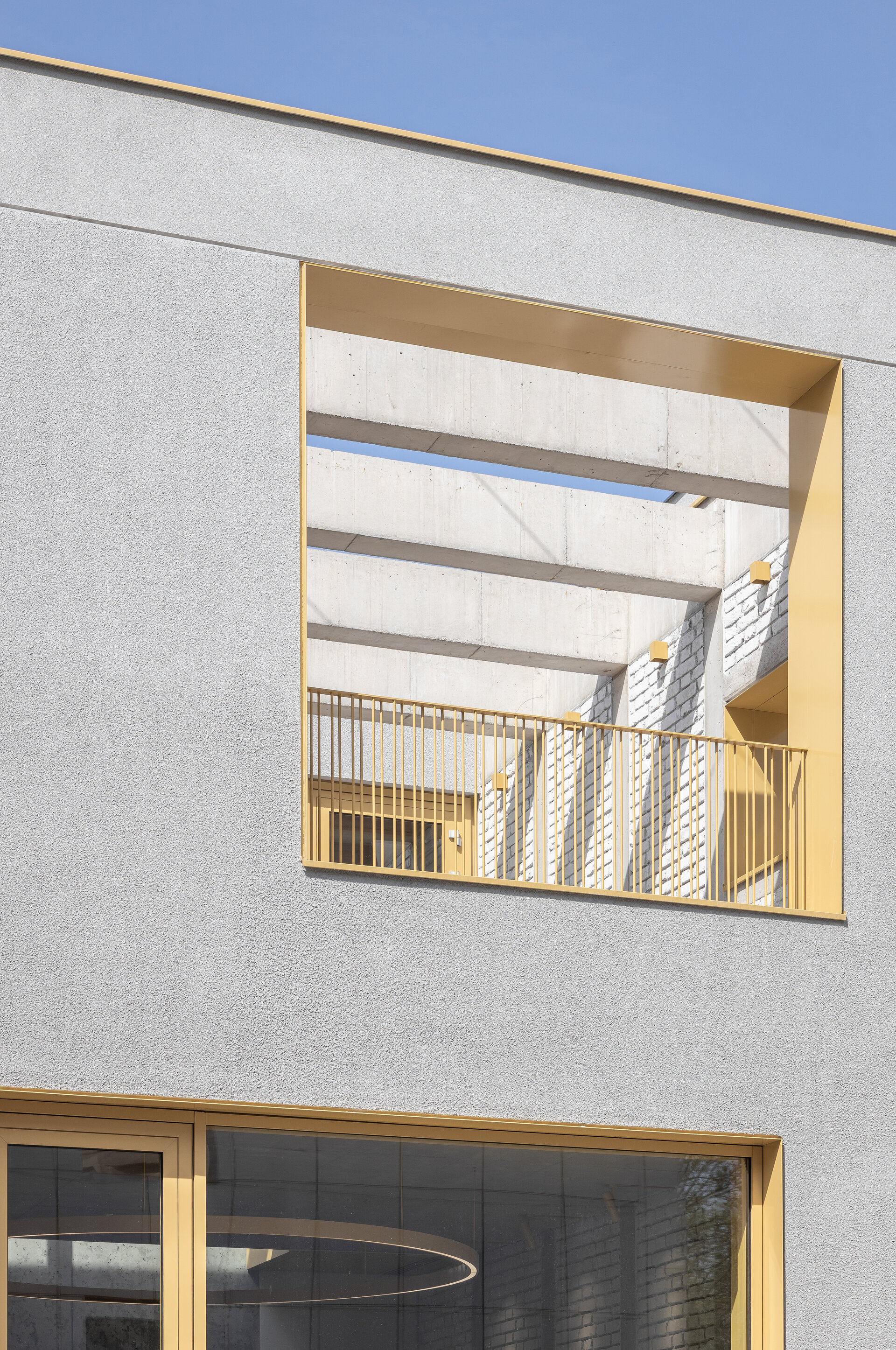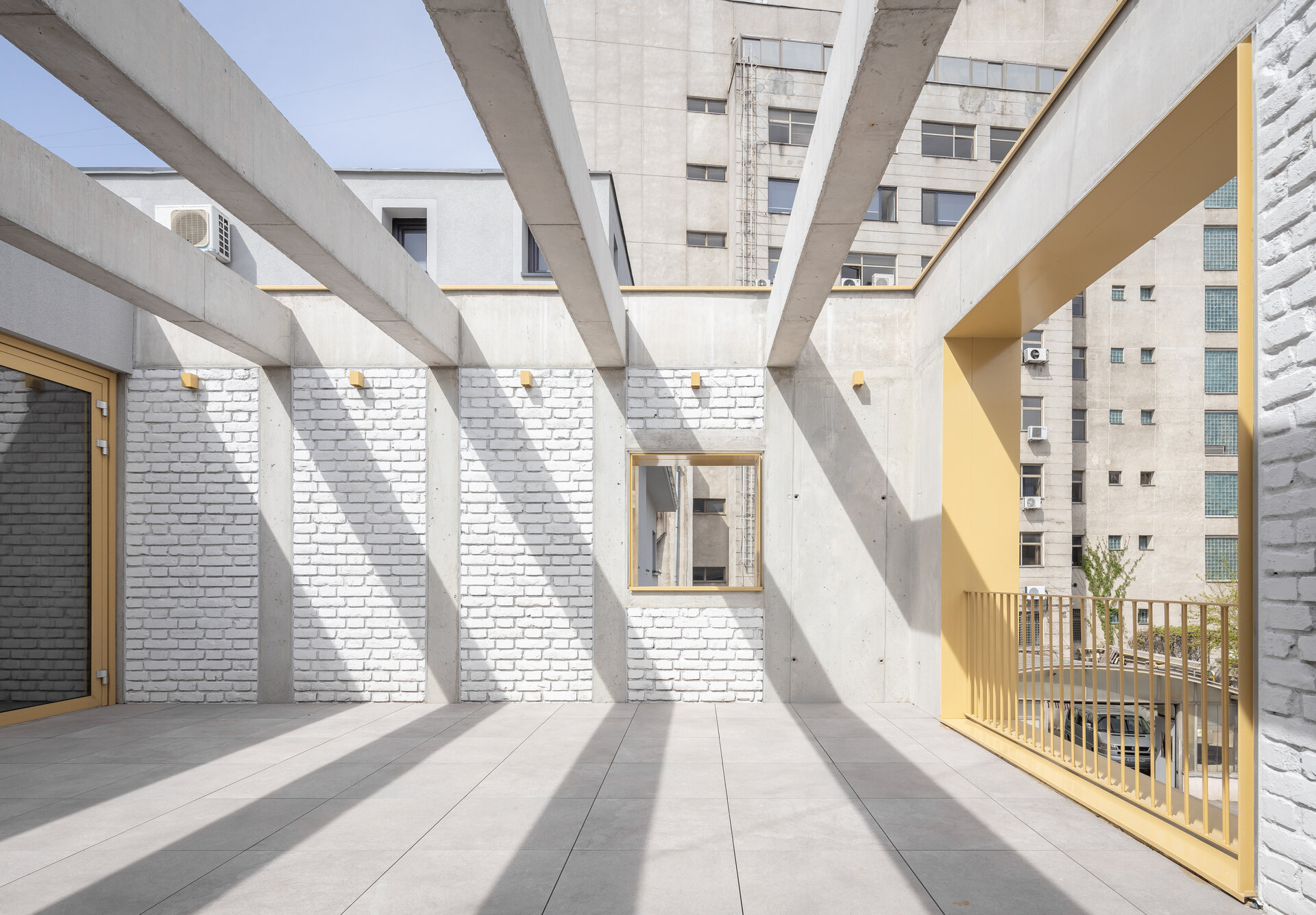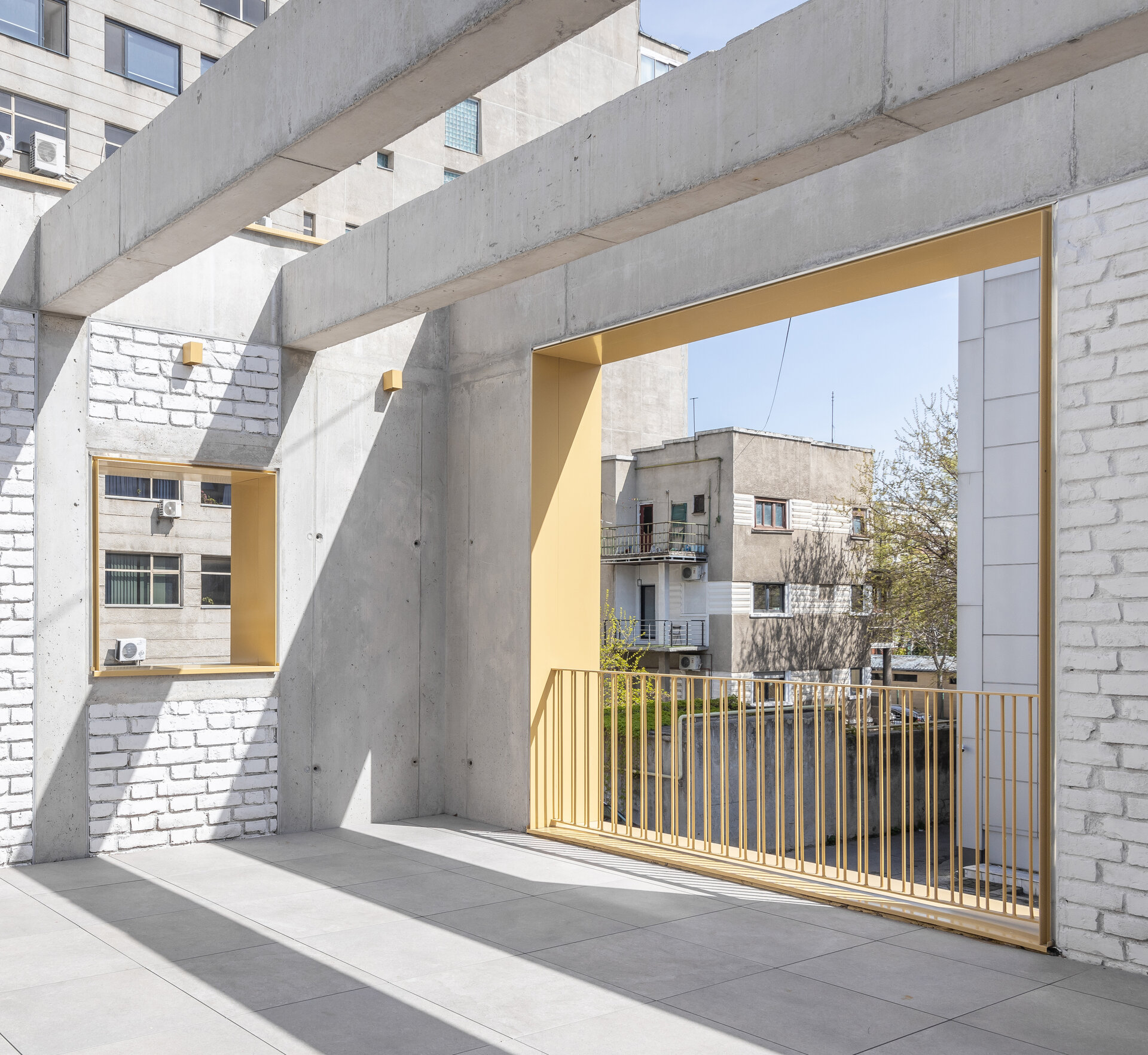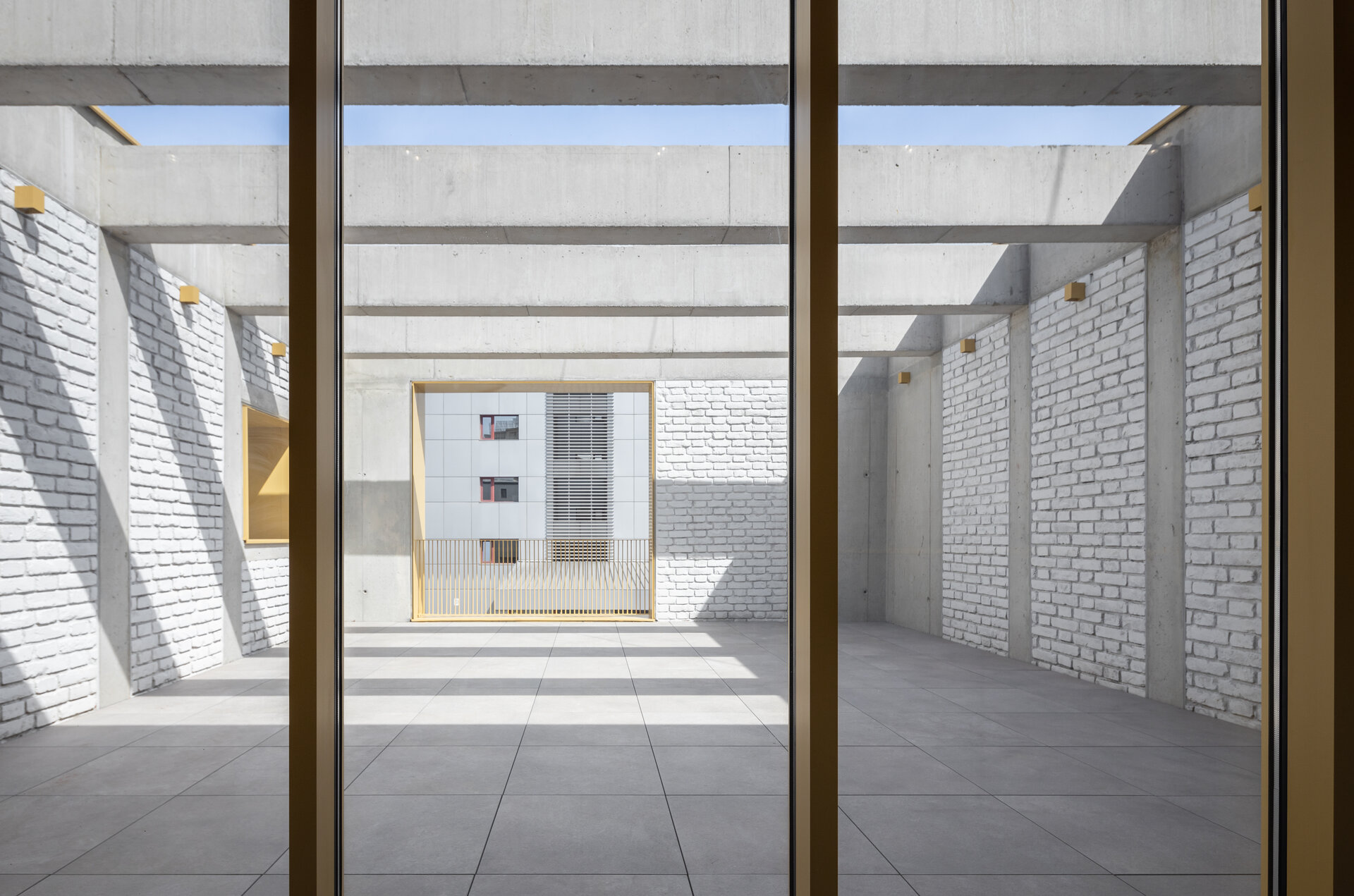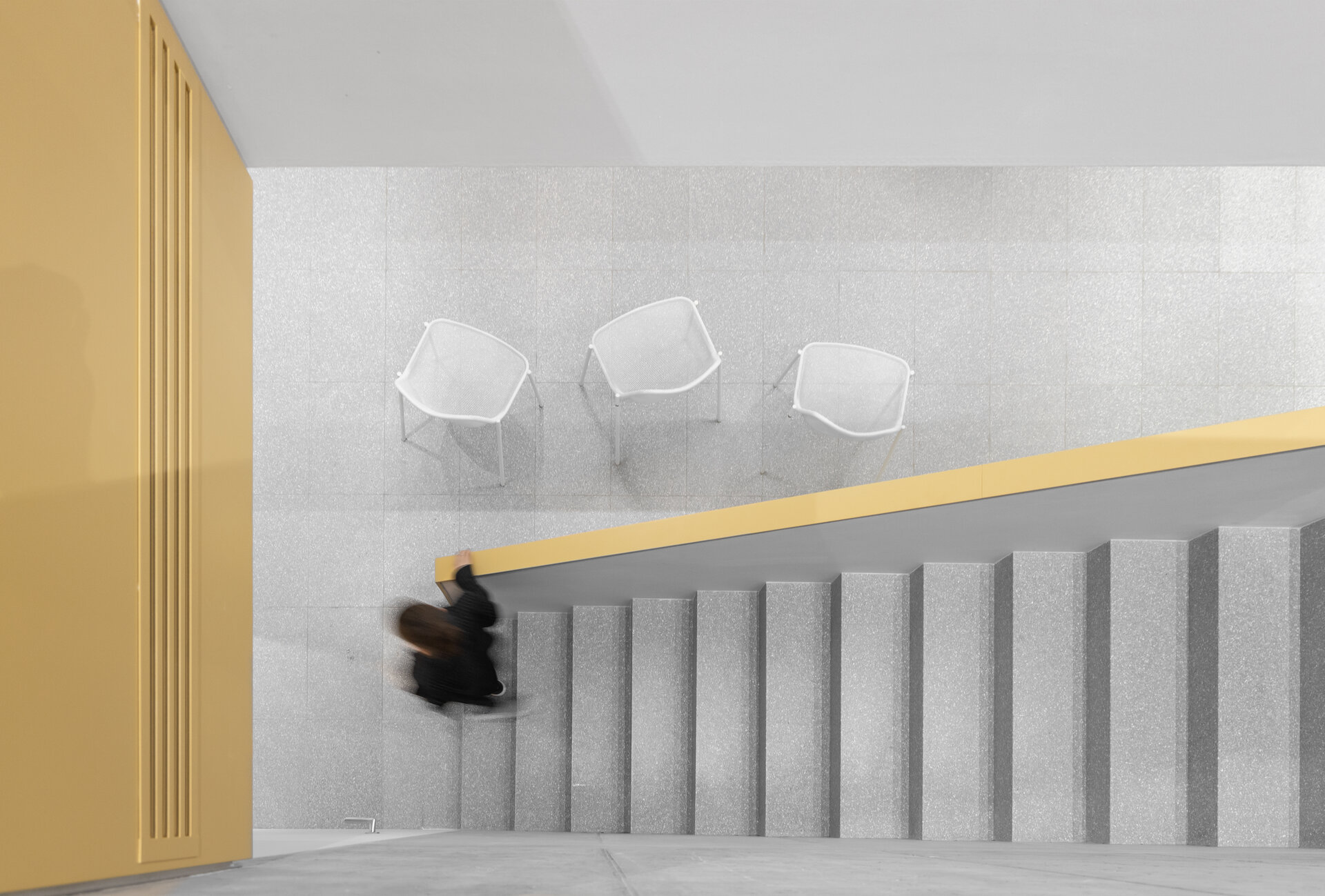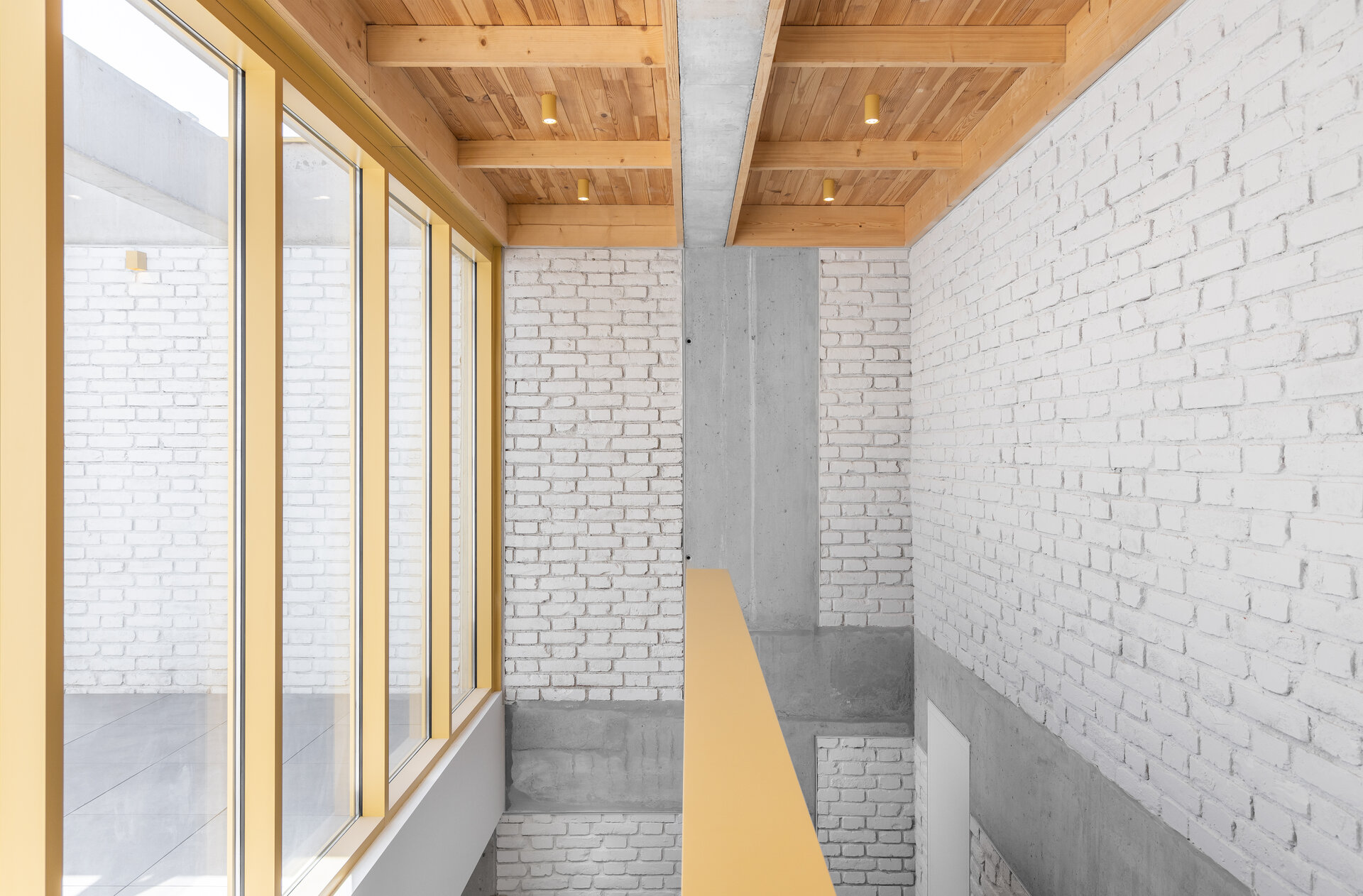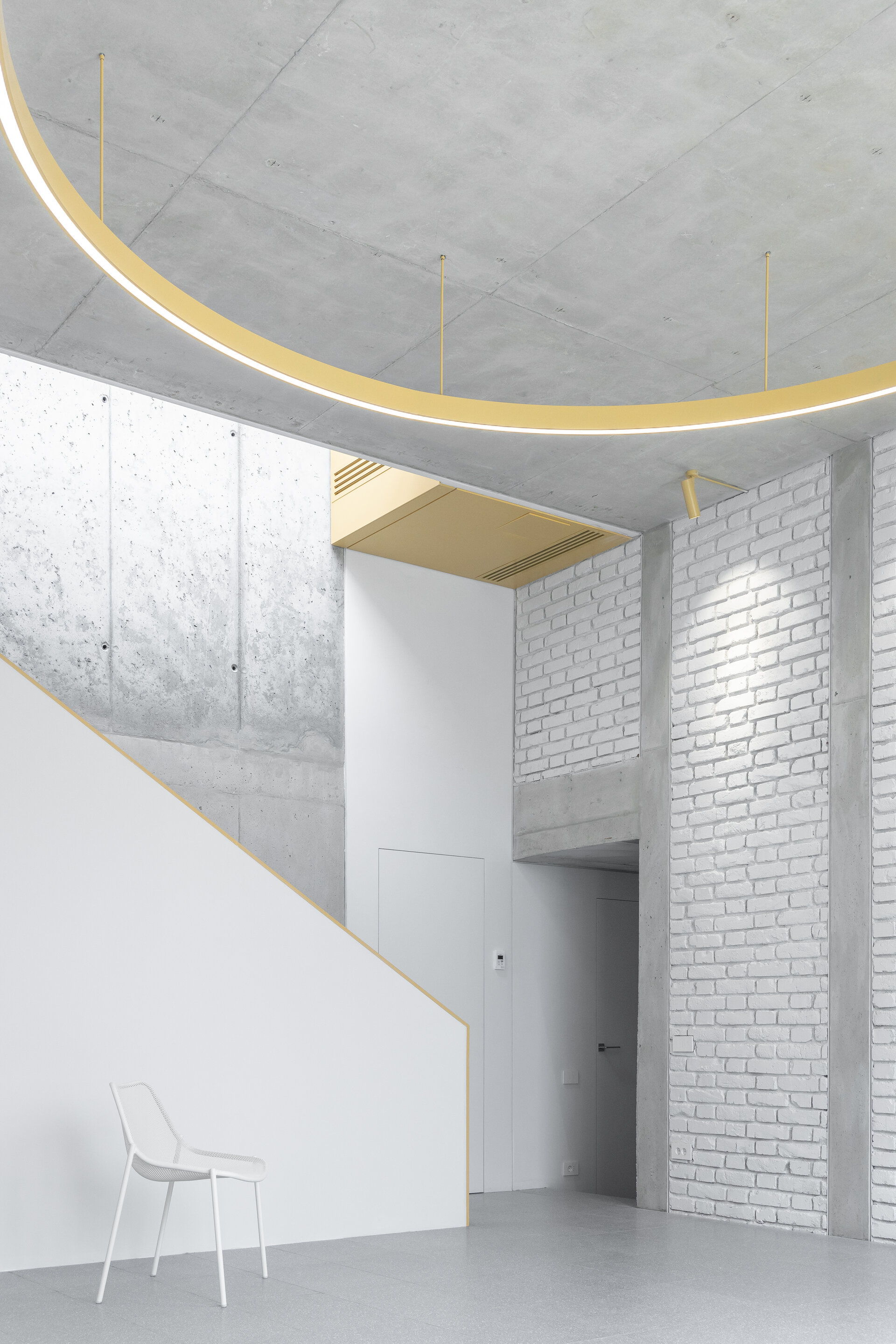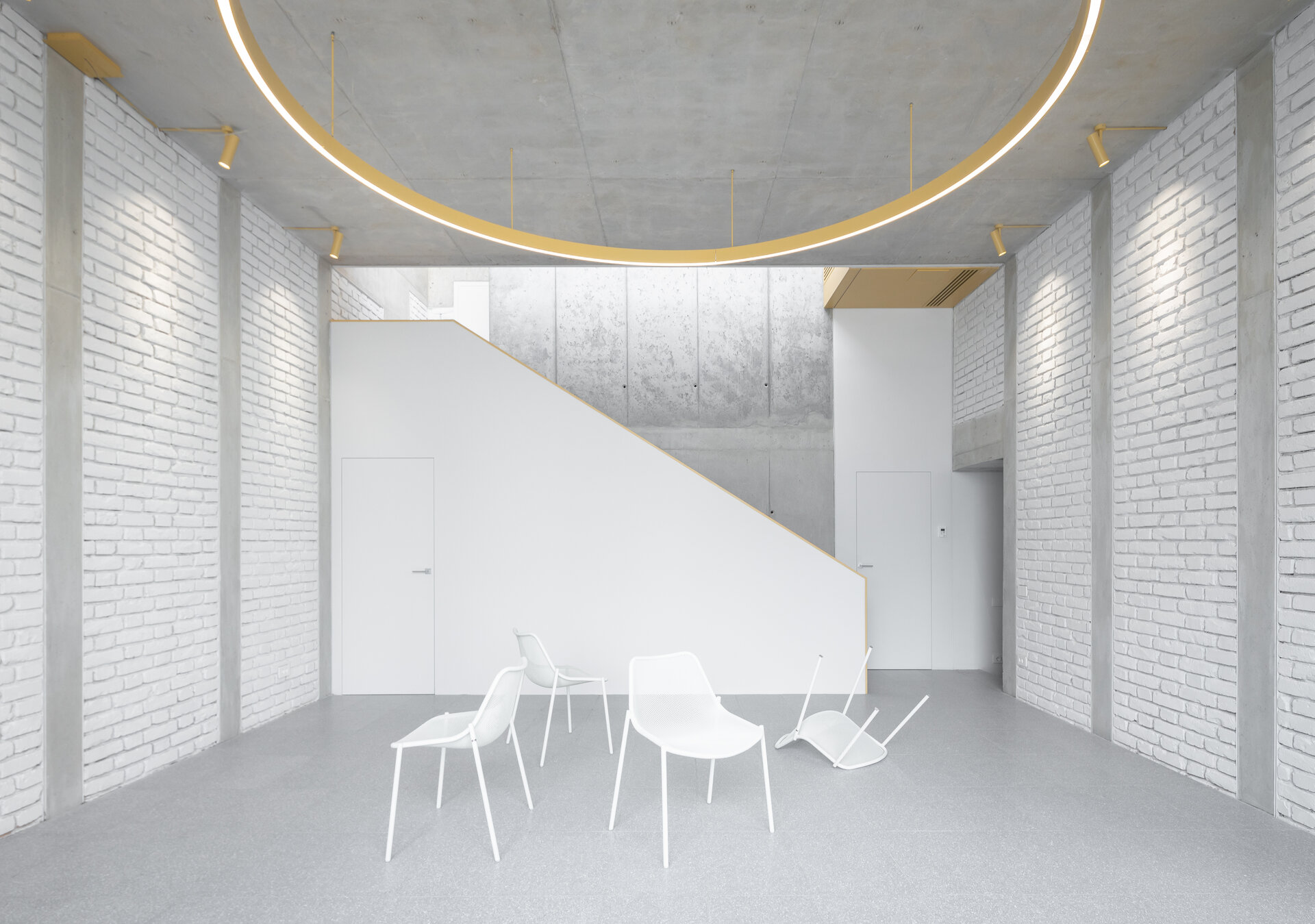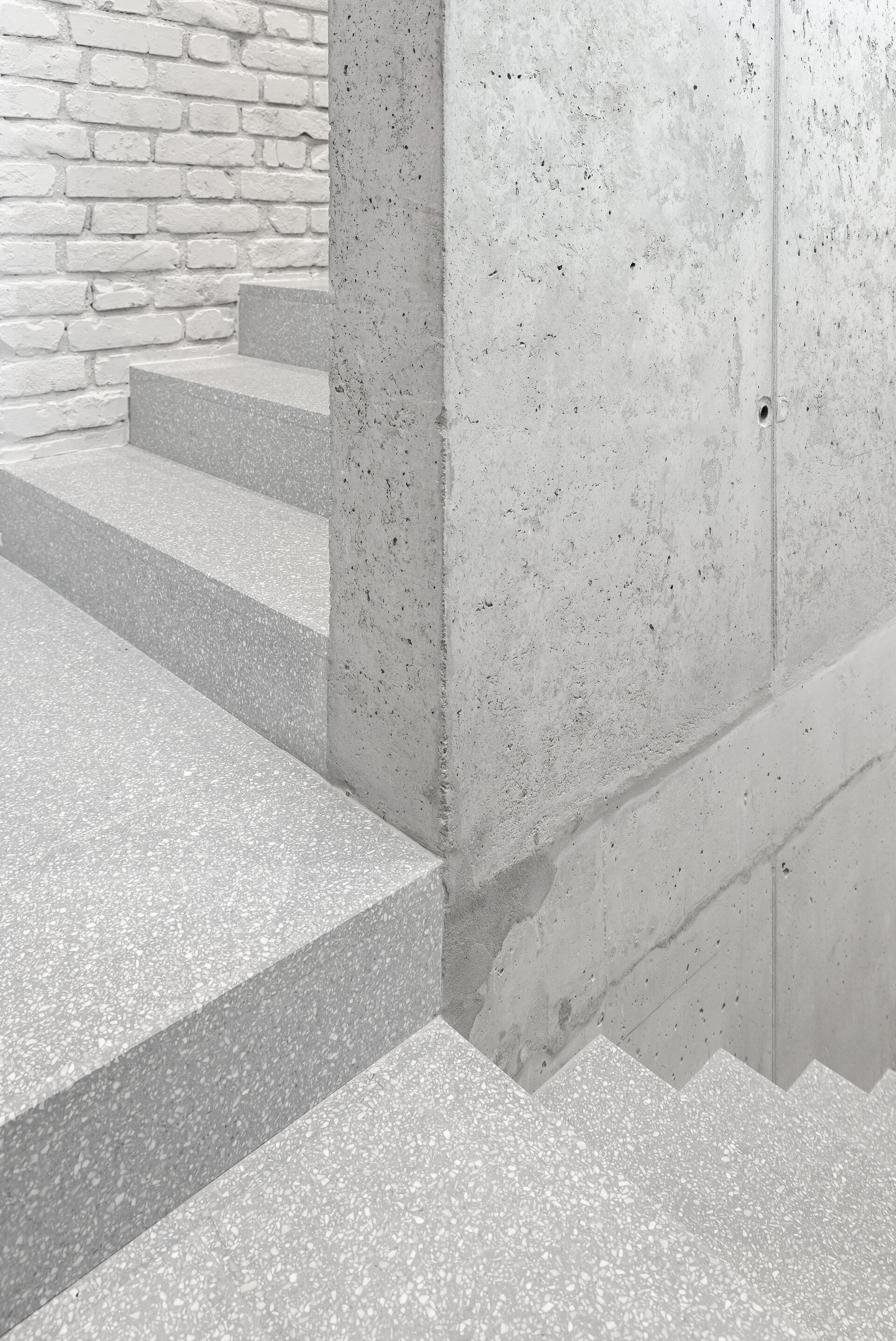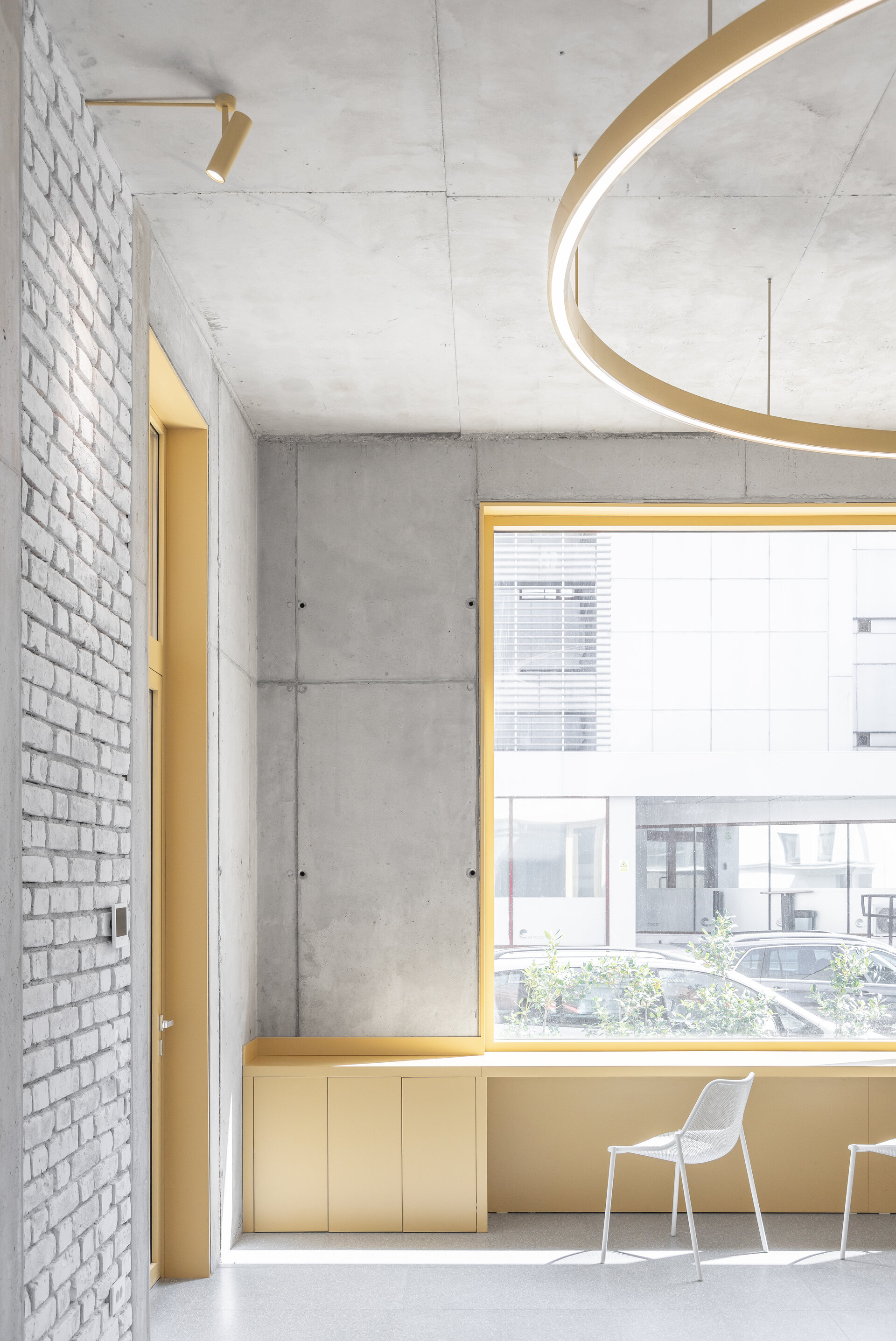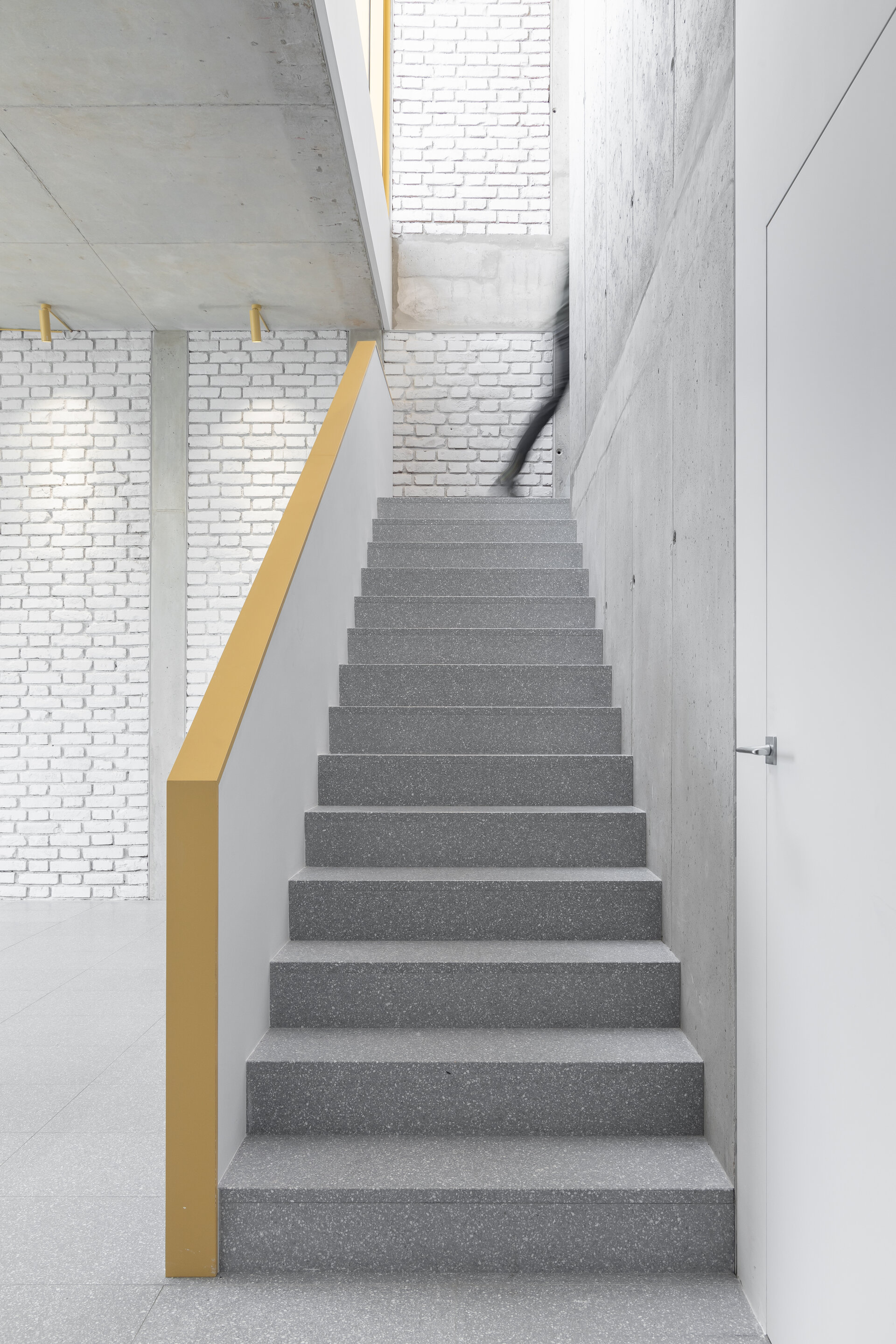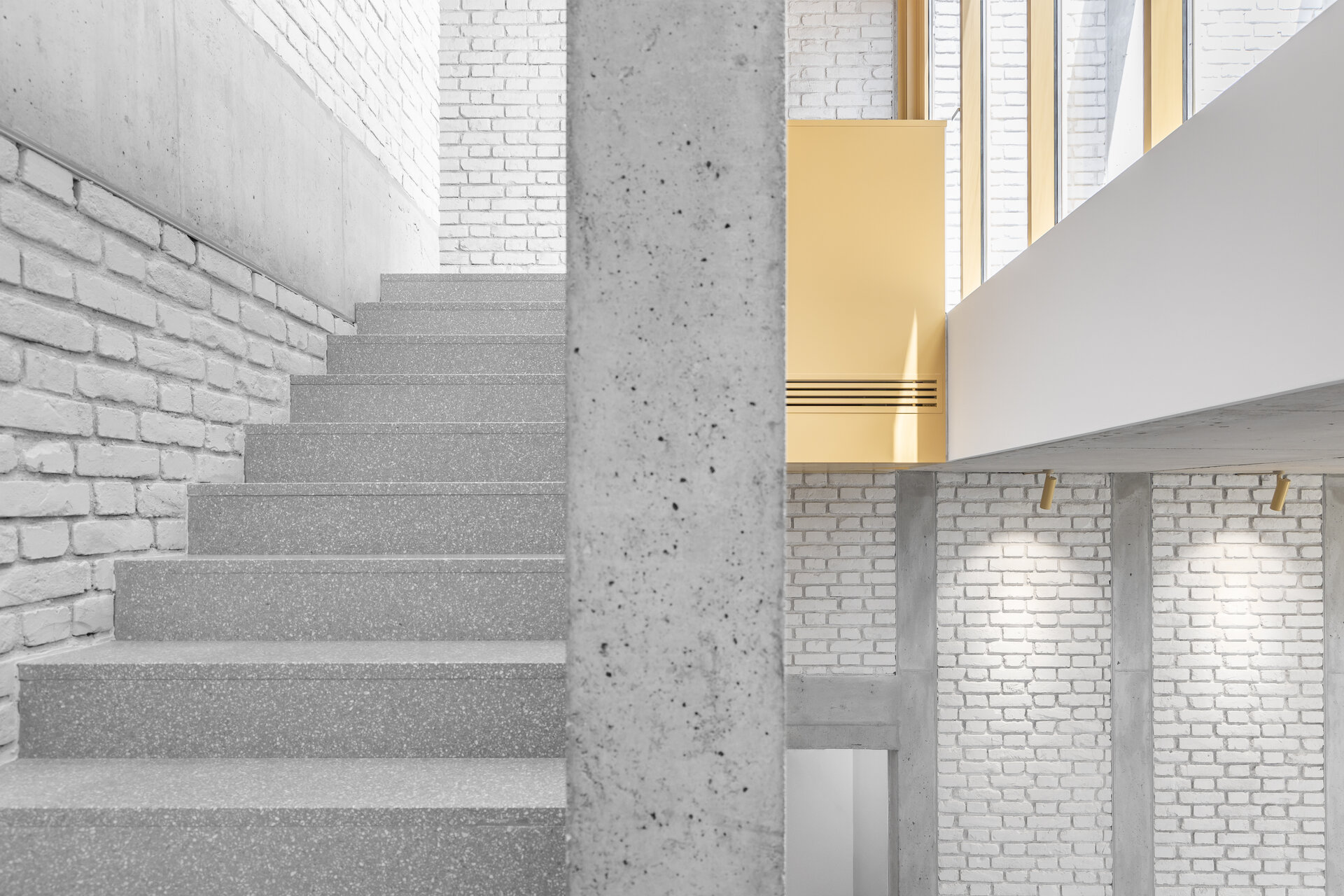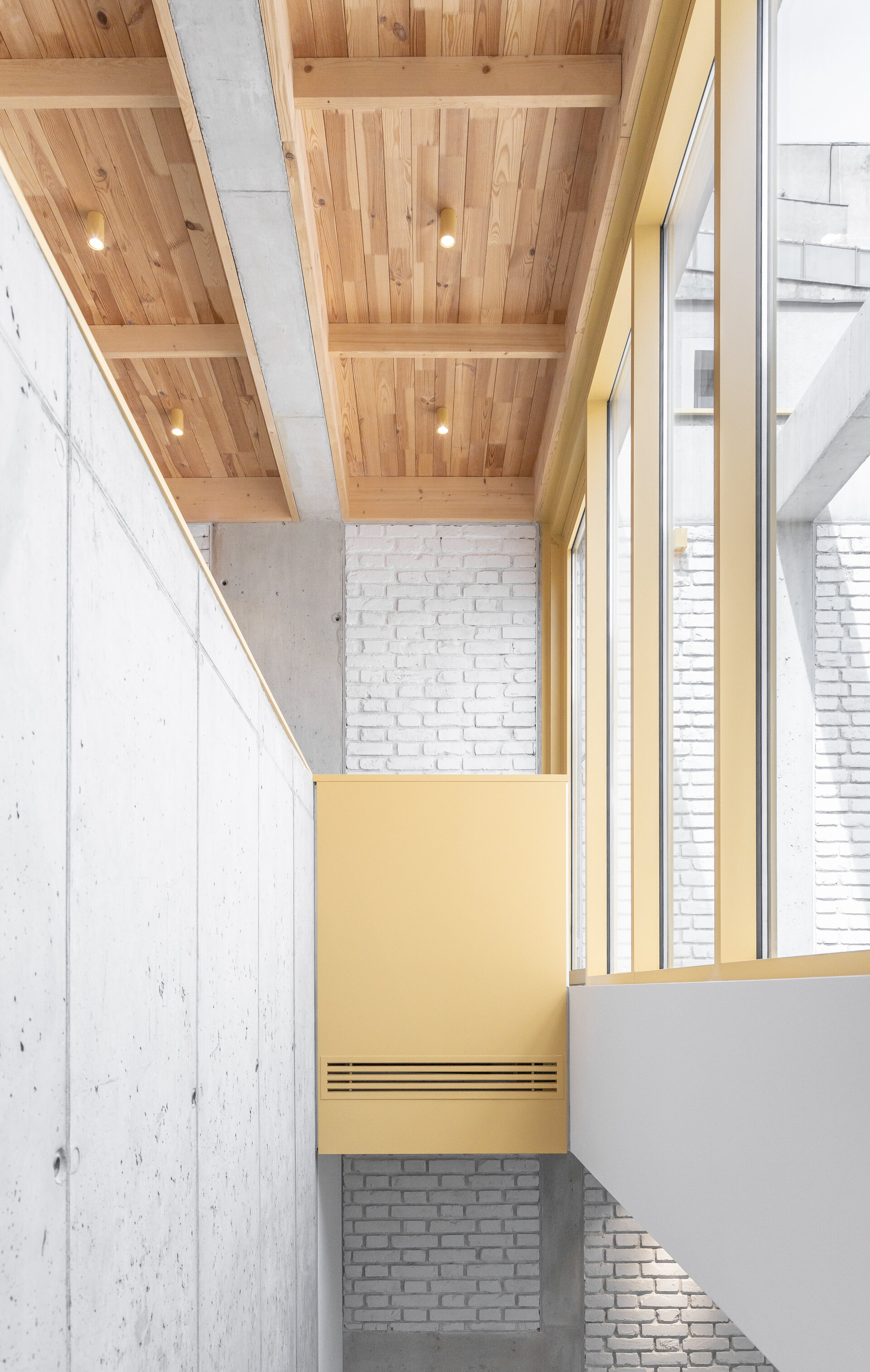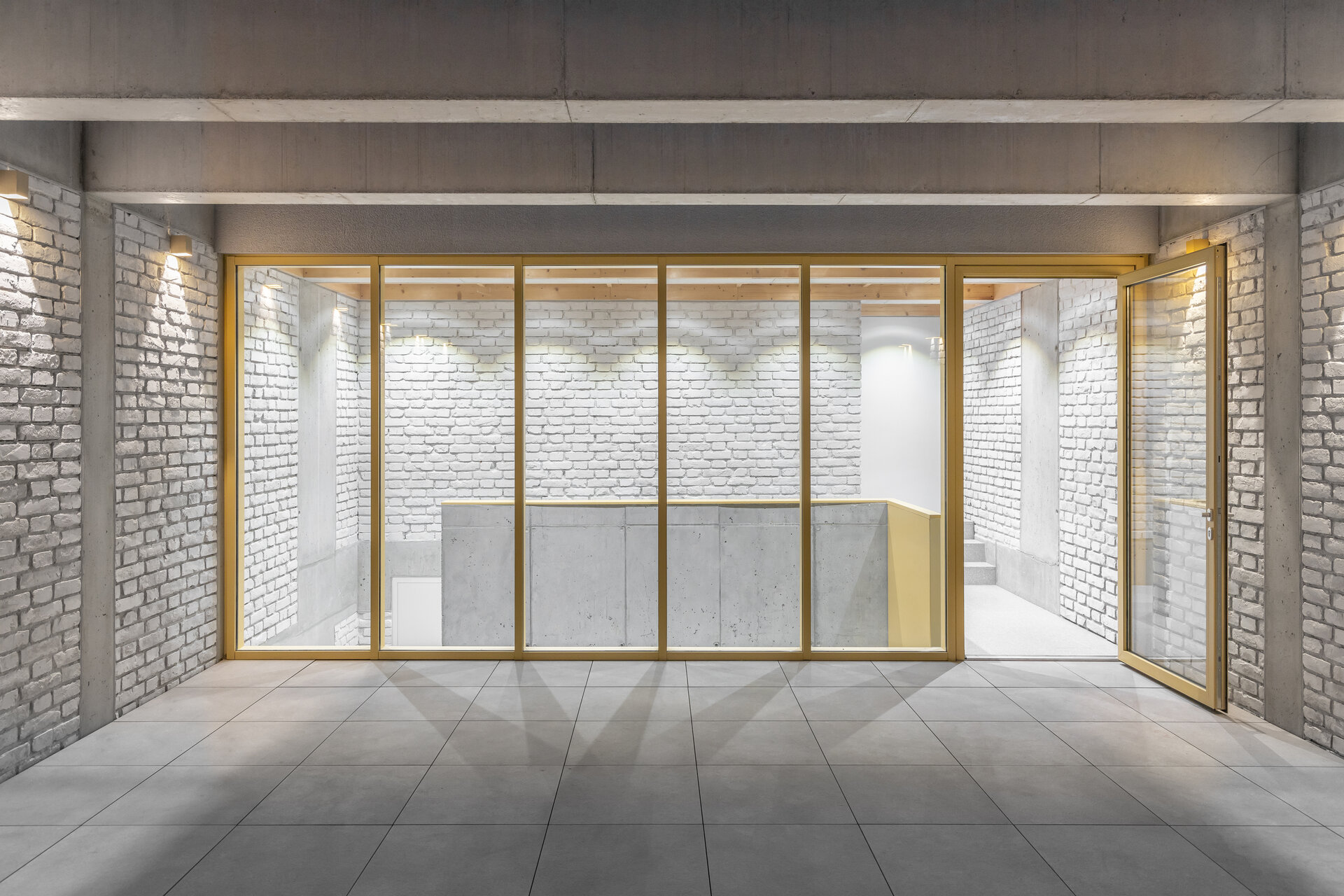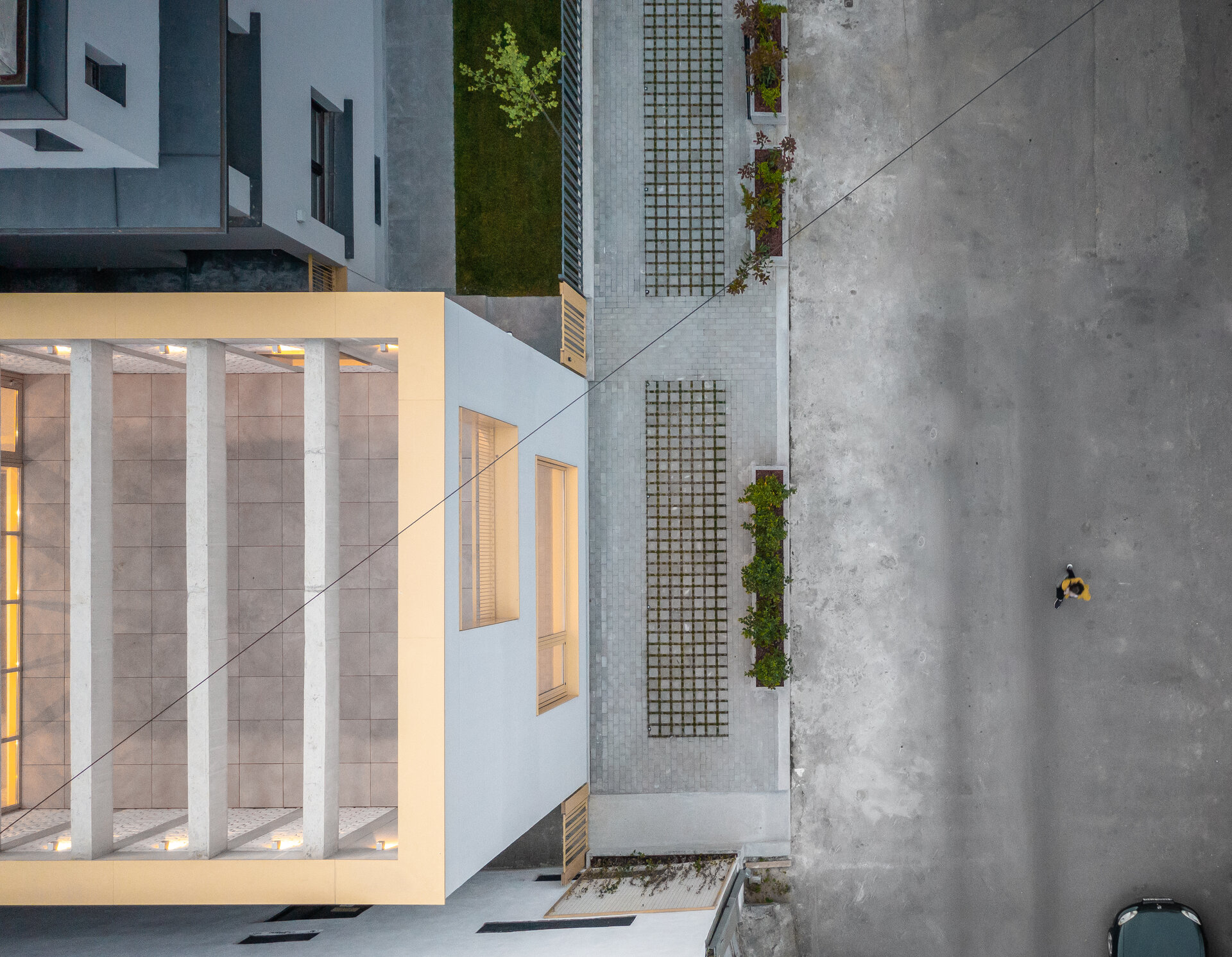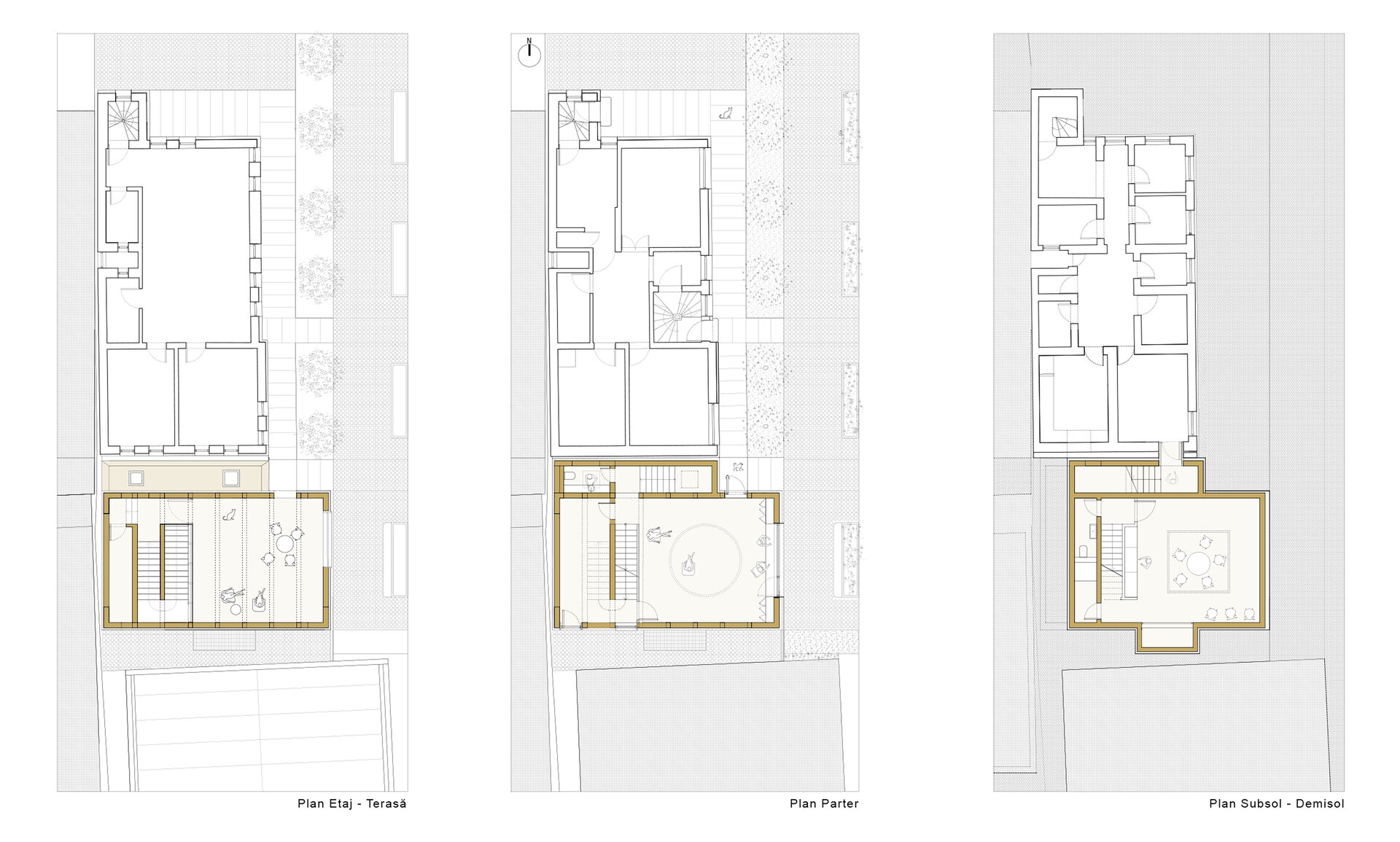
- Nomination for the “Built Architecture / Architecture and Heritage” section
Rehabilitation and extension of an interwar building, Iancu de Hunedoara 8A, Bucharest
Authors’ Comment
The architectural intervention involves the rehabilitation and extension of a house built in the interwar period, in the central area of Bucharest, less than 150 meters from Victoriei Square.
Belonging to the modernist style with Art Deco influences, the building is part of a fragment of the old urban fabric, characterized by modest heights, remaining hidden behind the fronts of tall buildings that border the main boulevard. Developed lengthwise along the plot, the existing house has the advantage of two courtyards and two entrances into the enclosure, allowing for extension with a new building, set transversely across the width of the lot, a simple volume that fits between two existing facades and meets one of the side boundaries of the property.
The ground floor of the new addition relates to the basement of the old house by means of a staircase inserted between the two volumes, a premeditated architectural gesture necessary to create minimal separation and spacing, which allows the architectural image of the old house to be preserved, as well as allowing natural light into its spaces on the upper levels. Despite the compact appearance of the volume, which opens outwards with two large apertures through which the main space can be perceived, the interior is spatially complex. The built-up floor area of about 80 m is divided in two by the staircase, a generous main space and a secondary space of reduced size and height.
Developed on three levels towards the street and four levels at the back of the lot, the building's spaces are successively traversed by means of access via the generous main staircase. In addition to its role of segmentation by its very position, this staircase becomes an architectural promenade.
The route to the generous upstairs terrace gradually reveals the spaces of the house, materials, textures and details that have been precisely implemented. The terrace at floor level somewhat replicates the surface area of the courtyard on the ground, with plans for a green garden in the future. The structure of the house is expressed with sincerity, and the wall enclosures with reclaimed brickwork also represent the final finish.
From the outset, functional freedom was encouraged by the client, whereby no particular function was imposed, in the idea of flexibility and spatial adaptability so useful to a rental-based economic scenario. The unprecedented situation that has marked the last two years has led to the lax design brief to help us imagine a space that can accommodate a variety of functions.
The warm grey colour of the inter-war facade - the same as the apparent concrete - is continued in the treatment of the extension, and the association with the bright yellow of the joinery, light fittings and metal parapets brightens the image. The hiatus between the two bodies is marked by the change in colour of the fencing at the gate from grey to yellow. The two gaps in the main façade, large and unaligned, mediate the optimal balance between interior and exterior, as well as the continuity of the finishing materials - exposed concrete and plastered brick.
- The Villa of Engineer Constantin Bușilă, Rabat Street no.1
- Rehabilitation and extension of an interwar building, Iancu de Hunedoara 8A, Bucharest
- Rehabilitation of the Slovak Embassy building
- Consolidation and extension on C. Coanda street
- Restoration of an Individual House in General Constantin Coandă St. No. 30
- /SAC @MALMAISON
- The restoration and the adaptive reuse of the former restaurant in Bucharest Botanical Garden
- The restoration of “Lăpușneanu” Tower in Suceava
- Home remodeling
- Rehabilitation weekend cottage
- Restoration of the “Flacăra” Cinema in Turnu Măgurele
- Mircea Vulcănescu 12
